گروپێ پێنگاڤ
٥/٦/٢.٢٥
جەژنا قوربانێ پیروز بە.
بهەلکەفتا هاتنا جەژنا قوربانێ گوڤارا پێنگاڤ پیروزباهی ل هەموو نڤێسەر و خاندەڤانێێت هێژا د کەت. بهیڤیا جەژنەکا ئارام و پری خوشی بۆ هەموو ئالیەکی د خازیت.
هەرچەندە ئەڤ جەژنە بهنەک زەحمەت و بێ دادیان دەرباس دبە ژ بەر نە هنارتنا مووچێن فەرمانبەر و کارکەرێن هەرێمێ، بئومێدین قووتێ خەلکی نە بیتە قوربانی هەڤرکیا سیاسی نەمازە ددەمەکي وەکو جەژنێدا کو خەرجیێن جڤاکی پترن و روژێن هەرە هەستیارن.
جارەک دن جەژنا هەموو ئالیەکی پیروز بە هەموو سال بخێر و خوشی.
Eid al-Adha: A Time of Faith, Sacrifice, and Togetherness
Eid al-Adha, also known as the Festival of Sacrifice, is one of the most important and meaningful days for Muslims around the world. In 2025, the holiday begins today—Friday, June 6. The exact date can vary slightly depending on moon sightings in different countries, but no matter where you are, the spirit of the day is always the same.
Why This Eid Matters
Eid al-Adha is rooted in the story of Prophet Ibrahim (Abraham), peace be upon him. According to Islamic belief, God asked Ibrahim to sacrifice his son as a test of faith. Without hesitation, Ibrahim was ready to obey. Just as he was about to do it, God stopped him and provided a ram to sacrifice instead. This powerful moment of trust and devotion is remembered every year during Eid al-Adha.
What Happens on Eid al-Adha
The day starts with a special prayer, usually held in large groups at mosques, community centers or in open areas. After the prayer, those who can afford to do so offer a sacrifice—usually a sheep, goat, cow, or camel. This act is called qurbani. The meat is then divided into three parts: one part for the family, one for friends and neighbors, and one for those in need.
But Eid al-Adha isn’t just about the sacrifice. It’s a day to show love and kindness. People wear clean or new clothes, visit family, share meals, and help those less fortunate. For many, it’s also a time to reconnect with loved ones, let go of past conflicts, and reflect on what really matters.
Tied to the Hajj Pilgrimage
Eid al-Adha also takes place during the Hajj, the pilgrimage to Mecca that every Muslim is encouraged to do at least once if they can. The day before Eid is known as the Day of Arafah. Pilgrims gather at Mount Arafah to pray, ask for forgiveness, and reflect. Then, on Eid, Muslims everywhere join in celebration, whether or not they are on the pilgrimage.
Different Cultures, Same Heart
Though the way Eid is celebrated can vary depending on where you are, the meaning behind it stays the same. In the Middle East, there are public holidays and big family feasts. In South Asia, people prepare dishes like biryani and kebabs, and wear colorful traditional clothes. In African countries like Nigeria, you’ll see community prayers, music, dancing, and shared meals. No matter the culture, it’s all about coming together, being thankful, and giving to others.
Even in Hard Times, Eid Lives On
In places facing war or poverty—like Gaza or refugee camps—many families can’t afford to buy an animal or celebrate the way they’d like. But that doesn’t stop them from honoring the day. They still gather to pray, share what they have, and hold onto their faith. These quiet, simple acts show the true meaning of Eid: it’s not about the size of the celebration, but the heart behind it.
In the End
Eid al-Adha is a reminder of faith, trust, and generosity. It teaches us that real strength comes from believing in something greater than ourselves, especially in hard times. It’s a time to stand beside each other, to help where we can, and to be thankful for what we have. Whether your Eid is big or small, it’s a day to feel close to God, to your family, and to your community.
On behalf of the STEP Magazine staff, we wish you and your loved ones a blessed Eid al-Adha. Eid Mubarak!





